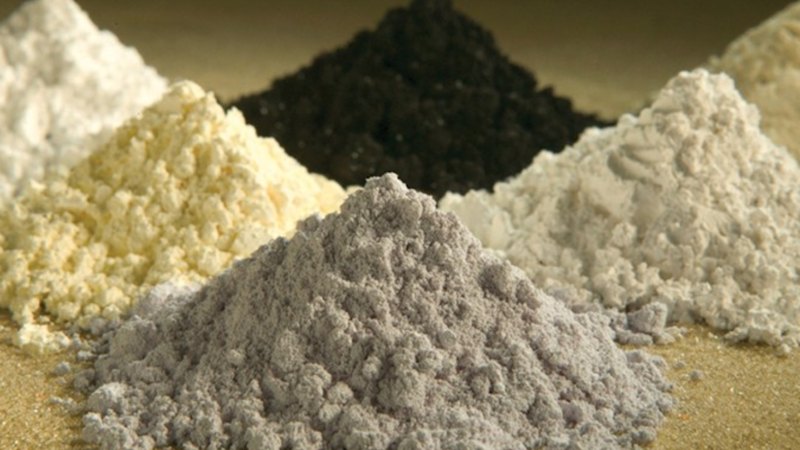
Critica Limited has made a significant breakthrough in its flagship Jupiter clay-hosted rare earths deposit located near Mt Magnet, Western Australia. The company has identified gallium oxide as a valuable by-product, achieving a leach recovery rate of approximately 63% using its established beneficiation process. This discovery enhances the strategic importance of Critica’s impressive 1.8 billion tonne Jupiter rare earths resource, which is regarded as Australia’s largest inferred clay-hosted rare earths endowment.
The addition of around 70,000 tonnes of contained gallium oxide enriches Critica’s already robust profile. The Jupiter project, situated in the mineral-rich Murchison region, boasts excellent nearby infrastructure and low impurity levels. Notably, the uranium and thorium content falls well below the thresholds set by the International Atomic Energy Agency (IAEA). The average grades at the site are a solid 1,700 ppm total rare earth oxides (TREO) at a cut-off grade of 1,000 ppm.
Advancements in Gallium Extraction
The newly discovered distribution of gallium within the Jupiter resource is remarkably consistent, averaging about 39 ppm gallium oxide across the model, with areas exceeding 50 ppm. This homogeneity suggests potential for straightforward extraction. Commenting on this achievement, Critica Limited CEO Jacob Deysel stated, “Achieving approximately 63% gallium extraction into solution marks an important step in demonstrating co-product potential from within our existing process.”
The metallurgical testing conducted recently has shown that gallium upgrading occurs approximately 1.2 times in the flotation concentrate before it reports to the leach solution alongside rare earths. Further testing by the Centre for Science and Technology of Mineral and Environment (GAVAQ) confirmed that about 63% of gallium successfully transitions into the leach solution.
Deysel emphasized, “Jupiter continues to deliver scale, simplicity, and strategic value. The metallurgical results indicate a clear line-of-sight to by-product recovery of gallium within the same process circuit that produced our first Mixed Rare Earth Product (MREP).”
Strategic Timing and Future Prospects
The timing of this development is particularly relevant given global supply chain challenges. Currently, China dominates over 98% of global gallium production and recently imposed export controls, escalating to a complete ban on shipments to the United States by December 2024. Gallium is critical for next-generation semiconductors, light-emitting diodes (LEDs), and various defense technologies, underscoring Jupiter’s role in supporting Western-aligned critical mineral security.
Critica’s efforts to de-risk the Jupiter project are accelerating. The company has built on its earlier achievements, including a laboratory proof-of-concept in January that resulted in an upgrade factor of approximately 830%. This involved subjecting a composite sample from Jupiter to a flotation process, which produced a beneficiated product grading 13,310 ppm (or 1.331% TREO).
In May, Critica dispatched a 400 kg bulk sample to GAVAQ in Vietnam for further scaling tests, following the successful intermediate product validation in September. This validation confirmed flotation-to-leach integration and process consistency, achieving between 6 and 10 times TREO beneficiation with approximately 95% mass rejection.
Critica has also commissioned a 3,000 kg closed-circuit pilot plant to gather continuous operating data and additional concentrate for further product optimization. A notable milestone occurred on October 28, 2025, when Critica achieved its first MREP production using a standard acid-bake pathway, resulting in a product with an assay of 84% TREO and a 78% recovery to magnet rare earth oxides (REO). This success validates the company’s beneficiation-first strategy.
Looking ahead, the data from these processes will inform a scoping study expected in the first half of 2026, followed by a pre-feasibility study in the second half of the same year. Offtake discussions are currently in progress.
At a cut-off grade of 1,000 ppm TREO, Critica’s expansive rare earths and critical metals resource boasts an inferred total of 1.8 billion tonnes, comprising 2.94 million tonnes of TREO, 682,000 tonnes of magnet rare earth oxides, and 70,100 tonnes of gallium oxide.
As pilot operations ramp up through H1 2026, Critica aims to establish the Jupiter project not only as a powerhouse for rare earths but also as a multi-commodity asset within Australia’s critical minerals landscape, poised to deliver diversified value in an increasingly complex geopolitical environment.






